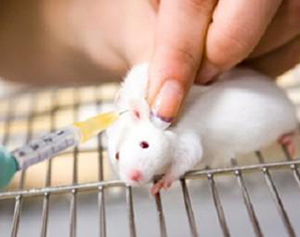The latest Statistical Report on animal experiments issued by the Government’s Health Products Regulatory Authority (HPRA) reveals that in 2020, 137,318 animals were subjected to experiments in Ireland that fell into the legal category of being ‘likely to cause pain, suffering, distress or lasting harm’, an increase of 1,154 animals compared with 2019. [1]
The rising death toll in Irish laboratories is a devastating setback after welcome declines in 2018 and 2019, and highlights the tragic failures behind the Government’s claims to be promoting reductions in animal testing.
Back in 2008, animal tests increased massively from 64,378 to 112,825 annually. A year later they had shot up again to almost quarter of a million. This expanding slaughter has been driven by the emergence of the botulinum toxin industry in Ireland, which massacres vast amounts of mice in one of the most vicious animal tests in existence, the Lethal Dose 50% procedure. Each batch of the extremely poisonous botulinum toxin was tested by injecting the substance into mice to establish which dosage would kill 50% of the creatures. Over a few days, the lethal neurotoxin causes animals to suffer muscular paralysis, blindness, suffocation and death, as they are deliberately left untreated.
Although a significant proportion, if not most, of these batches of botulinum were intended for cosmetic use, they avoided the ban on animal testing of cosmetics because of a loophole, and government regulators have turned a blind eye to these unethical tests.
Some companies developed non-animal tests for botulinum toxin, but commercial confidentiality has been preventing other producers from using these tests instead of animals. Yet despite the existence of non-animal methods, the government has continued to licence animal testing for cosmetic botulinum while doing effectively nothing to facilitate sharing of life-saving scientific knowledge regarding the non-animal tests.
The 2020 figures show once again that the majority of animal tests in Ireland continue to stem from botulinum testing, involving approximately 100,000 animals as detailed in Table 8 under ‘Batch potency testing’, a rise of about 7,500 compared with 2019. The fact that this highly egregious area of animal cruelty has increased betrays the government’s lack of genuine commitment to reducing animal tests.
Promoting the replacement of animal tests is one of the key principles of EU Directive 2010/63/EU where the Statistical Report reveals implementation failure. Two other core areas where deep concerns are revealed are:
• the independent ethical evaluation of animal testing projects through a harm-benefit assessment, taking into account animals’ intrinsic value that ‘must be respected’
• ensuring the public is informed through providing objective information
On the question of ethical evaluation: given the significant number of cosmetic botulinum animal tests, it is clear that the government operates the harm-benefit assessment in a skewed manner that places no effective weight on the horrific suffering of animals in relation to what is a highly trivial ‘benefit’, a balancing that grossly favours commercial interests over public values and animal welfare.
On the question of objective information, it is notable that the Statistical Report appears to go out of its way to avoid specifying that most of the animal tests it covers are for botulinum testing, and it repeatedly uses the phrase ‘medicinal products’ where the relevant tests actually include cosmetic products (e.g. see commentary accompanying Tables 8 and 11).
In conclusion, the Statistical Report reveals massive unnecessary animal suffering overseen by a regulatory system that gives little consideration for animal welfare, the spirit of the law or for democratic accountability.
[1] The number of experiments – or ‘uses’ as the HPRA euphemistically puts it - is slightly different (137,988) because a small proportion of animals are used more than once.


